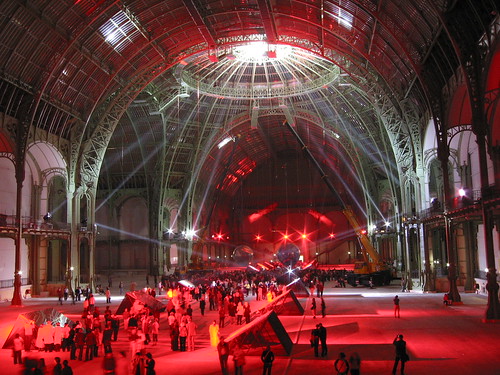.flickr-photo { border: solid 2px #000000; }
.flickr-yourcomment { }
.flickr-frame { text-align: left; padding: 3px; }
.flickr-caption { font-size: 0.8em; margin-top: 0px; }
Thanks to the friends who dropped by and offered their thoughtful responses to the discussion questions in the previous post. I’m grateful that people took the time and energy to share their thoughts, and unsurprisingly they were really smart and provocative contributions.
You can see the emerging discussion in the following links, and my own responses to each. I did not try to answer any of the questions comprehensively, just offer a couple angles.
What does transformed teaching and learning look like?
Where teaching and learning are almost indistinguishable from one another. I’m not saying that the roles cease to exist, but that teachers model excellent learning in their practice (among other skills), and learners model the sorts of skills we associate with teaching — for instance, can we ask students to create useful learning resources as their assignments? If we bust the “walled garden” model, at least some of the time, what groovy stuff might happen?
What are the key components needed to effect this transformation?
There is a huge cultural shift required. Great teaching may be something of a science, but it is at least as much an art. Perhaps we should ask, “what environments, attitudes and tools would foster these artists to do their best work?” And we should encourage teachers and learners to make their processes, not just their outcomes, visible, accessible and reusable.
I spoke with an attendee yesterday who noted that there was little in the (excellent) Review of the Open Educational Resources (OER) Movement that promoted cultural change in our higher education institutions. Even with the dramatic changes in the broader techno-cultural landscape in the past ten years, how much has essentially changed with universities in the western world? Isn’t it all too easy to imagine universities remaining essentially unchanged — or at least clinging to business as usual — ten, even twenty years from now? Given the critique by Downes, Attwell, et al… that the current Hewlett OER vision is institution-centric (personally, I think I understand how that bent evolves, but the critique stands) perhaps promoting change in this culture should be on the agenda?
How do we build these key components and connect them?
Strongly urge projects to make their content available in open remixable formats. Valid XHTML addresses accessibility concerns, and also makes content easier to reuse. And man, how about RSS? Not just RSS updates alerting subscribers to changes in content, but RSS feeds transmitting the learning content itself whenever possible. I would also step up efforts to identify (and perhaps support) open educational content and initiatives that are developing out in the wider world — and that we broaden our definitions of what constitutes educational content.
We need an enthusiastic grassroots community to move this initiative forward. The OERderves blog is a welcome development, I would really try to kick out the jams with it — connect with bloggers and other online educators outside the Hewlett community (offer shout-outs and constructive critiques), try to bring in new voices, and don’t be afraid to have some fun and take a few risks. Let it be a blog, not a newsletter with a comments function.



Great stuff, Brian. Thanks for putting all that stuff together and alerting us to the conversation at hand. From the topics and comments in the OERderves blog it seems like their were a multitude of really smart people thinking quite hard about these issues.
Thank you again for your great comments. I’d say your impression of the event is pretty much dead on. I am presently suffering a bout post-conference brainburst, but it really was a mind-expanding pleasure.
“If we bust the “walled garden” model, at least some of the time, what groovy stuff might happen?” One of the larger, least discussed questions for .edu this decade.
Sounds like you’re glad you went, eh? 🙂
Speaking of the future of education, check out this passage from the WEP report from this week:
“In education, IP networks are turning the traditional classroom into virtual schoolhouses that deliver education to remote students, life-long learners, and others. Essentially,
education has been transformed from a teacher-led class to a student-centric experience accentuated by self-learning; peer-to-peer teaching; rich, readily available content; greater accessibility; and discovery-based learning.”
Sounds like a mountaintop experience, Brian. I’m really glad you were there.
Now here’s a brainburst for ya–more to come: with all due respect all on board the train, these days I’m thinking that one of the biggest mistakes in our quest for real school is to grind away at the “teacher-led”/”student-centered” dichotomy. I’m coming to believe not only that the dichotomy derails the quest, but also that it’s just plain false, even perniciously so.
How’s that for a radical breakfast?
I will elaborate soon, I hope.
Pingback: Disintegrated thoughts on content integration and remix